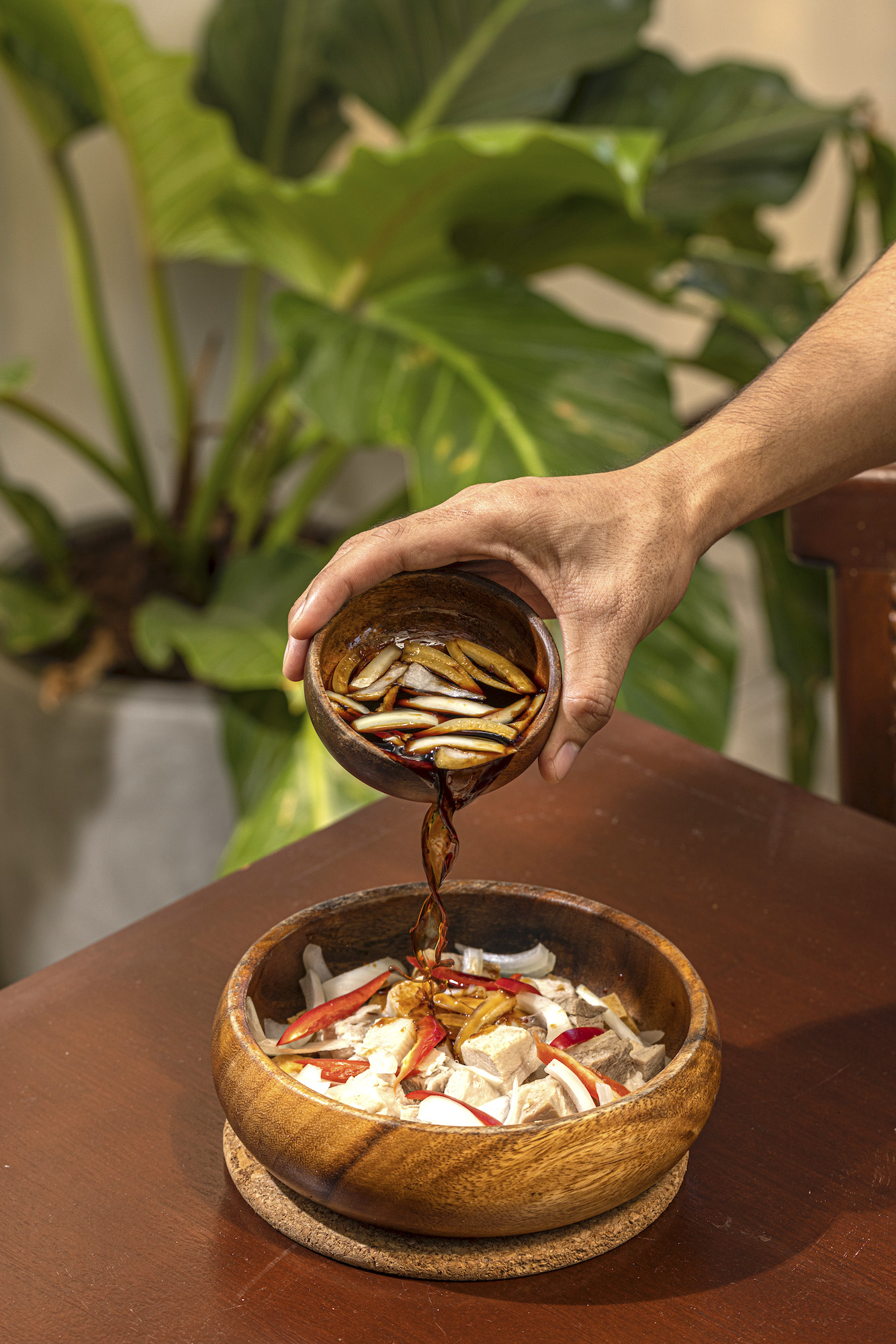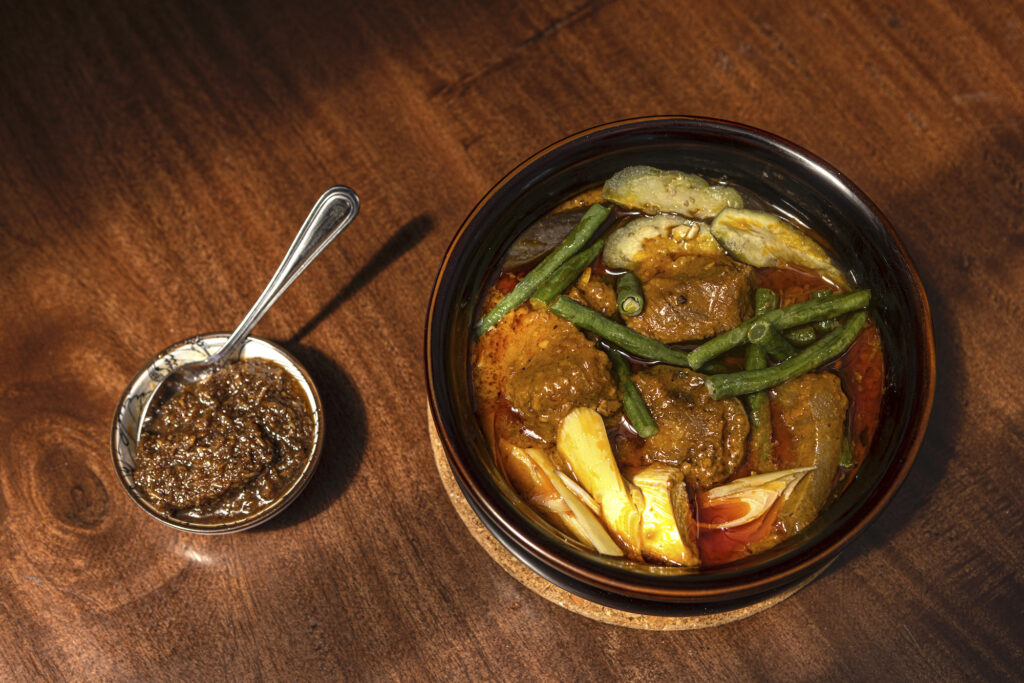Not many restaurants in the country can boast of thriving for 73 years like Little Quiapo has. In fact, this cultural landmark stands as one of the 10 oldest restaurants in the Philippines. In an industry that has seen many establishments shuttered since the start of the pandemic, LQ—as it is endearingly called—actually foresees growth.
What’s their secret to longevity? Caleon family matriarch and current president of Little Quiapo, Alma Bartolome Caleon, thinks it’s important to recall the restaurant’s beginnings.
A clear vision is crucial

She narrates her father Irineo Bartolome’s efforts to stand out even as an ice cream vendor. “My dad started being a sorbetero post-war. He really worked his way up. My dad would dress up in all white to sell ice cream. He would wear a hat, a clean, white polo, white pants, and white shoes. They said he was really different. He even lined his ice cream cones in tissue paper to show people how particular he was.”
He was able to save enough money to set up a small eatery at the University of the Philippines in Quezon City. “After a while, it was always so full of students and professors from the university. The eatery was called Rendezvous and one customer noticed how full the place was all the time and said, ‘Ano ba ’to? Parang Quiapo! (What is this? It’s like Quiapo!)’ At that time, Quiapo was the business hub in the Philippines like Makati is now. So my dad had an idea to call it ‘Little Quiapo,’” Alma says.
“My dad started being a sorbetero post-war. He really worked his way up. My dad would dress up in all white to sell ice cream. He would wear a hat, a clean, white polo, white pants, and white shoes. He even lined his ice cream cones in tissue paper to show people how particular he was,” says Alma Bartolome Caleon.
Bartolome passed away in 1975 when Alma was only 11 years old. “From the start, I was really focused on taking care of the business. When he passed away, my siblings and I didn’t know what to do. It’s a good thing that Little Quiapo somehow already established its name in the market. We had employees that were there from the beginning that helped us through the transition,” she says.
Her son Martin Caleon, 29, who is the BF Homes branch manager and in charge of purchasing says, “When lolo passed away, I think there was a need to continue his legacy. In 73 years, the interiors changed and everything else may have changed but the quality stayed. That’s one important part of succession. It’s not only the name that you’re carrying. You need to also be able to carry on what you’re known for as a restaurant—and that’s the taste.”

Their sumptuous bestsellers are proof of this mindset. The palabok, which still follows the original recipe, uses thin bihon noodles blanketed in a thick orange, flavorful sauce with tinapa flakes. It is topped with slices of hard boiled eggs, tofu, squid, crushed chicharon, and calamansi on the side.
The halo-halo—of which they’ve sold over 8 million—is served in a traditional soda fountain glass with layers of red beans, jackfruit, caramelized plantains, ube halaya, pinipig, leche flan, and a large scoop of ube ice cream.
Building a legacy is also based on love
Although food is central to any restaurant, restaurateurs would tell you that running one is so much more than that. “A lot of the original employees stayed with us until retirement. Our team really is made up of people that are dedicated and have malasakit for the business. They dedicated their whole lives to help grow Little Quiapo as it is now,” Alma says.


Angela Caleon, the youngest child who handles the marketing of Little Quiapo adds, “I don’t think the business would be here if it weren’t for this malasakit or genuine concern, not just of our parents for the business but also even the employees that stood by them. We’re one big family here, and the family-oriented vibe is there.”
“I don’t think the business would be here if it weren’t for this malasakit or genuine concern, not just of our parents for the business but also even the employees that stood by them,” says Angela Caleon.
It’s not unusual to see the Caleon family casually socializing with their staff. They have a close-knit relationship and like it that way. “We know that we can never be Little Quiapo without them. We value them and always tell them that they are one of the pillars of why Little Quiapo is still here after 73 years,” Alma says.

Pressures of keeping Little Quiapo in the family
Meanwhile, the eldest of the Caleon children, Miguel, handles the finances as well as manages the Quezon City branch. He believes there’s a big hurdle being third-generation restaurateurs. “I studied about family businesses before and I read somewhere that the first generation establishes the business, the second generation grows it, and it’s a trend that the third generation kills it. That’s a challenge for us since we know some family businesses that stop at the next generation because there’s no more interest in it. We’re happy and blessed that while growing up our parents instilled in us the importance of why we need to keep it going.”
Although the siblings remember doing restaurant work and going to the markets as children, they didn’t feel pressured by their parents to continue Little Quiapo’s legacy.


“Having young parents, they didn’t really push me to help out right away after graduating. They said, ‘So you want to make a name for yourself outside? Try it out. See how the real world is—have a boss, have superiors, have subordinates.’ So I did my own thing after graduation. I worked, and I studied and I worked again. But the time came when I felt the need to help out,” says Miguel.
Running an established restaurant like Little Quiapo allowed Alma and her husband Gil to raise their children. “We were quite conservative in running the restaurant so we used the time to spend it with our children,” Gil says.
“Our gear was to take care of the children. The business itself was good but it wasn’t the be all, end all of everything. We wanted to raise the best children,” adds Alma.
Running an established restaurant like Little Quiapo allowed Alma and her husband Gil to raise their children. “We were quite conservative in running the restaurant so we used the time to spend it with our children,” Gil says.
Their parents’ presence while growing up had a big impression on the siblings. “We never had the typical 9-to-5 worker parents who you only see at night or on weekends. So having them around every day makes me want to be that kind of parent also,” says Miguel, who himself is a father of two.
Since joining their parents in the business, the siblings have been able to steer Little Quiapo into the modern times. “We’ve been so tied up with the old school thing. They’ve introduced us to what’s the latest,” says Gil.
The renovated interiors of the BF Homes branch is brighter with references to the classic Filipino home—jalousie windows, solihiya, and encaustic tiles. A cozy al fresco area in the front is lined with planter boxes made of wood from the old ceiling of the restaurant. Martin has also persuaded his parents to put up a commissary to prepare for expansion. The Quezon City branch meanwhile is undergoing renovation and is bound to open later this year bigger than ever with two floors.
There may be no manual or formula for how to successfully pass on a family restaurant to the next generation, but in the case of Little Quiapo, there are clear factors that help pave the way for a bright future.

You want your children to follow your footsteps in continuing a legacy? Lead by example and be present in their formative years. Family is key— your customers are your family and your staff is your family. And when you treat them like your family, there’s always genuine concern for them. It’s a cycle that will be hard to break.
“I constantly remind my children how hard we worked to continue this legacy,” Alma says. “I always tell them that if they go on and continue caring for the restaurant, it will take care of them and their children.”





